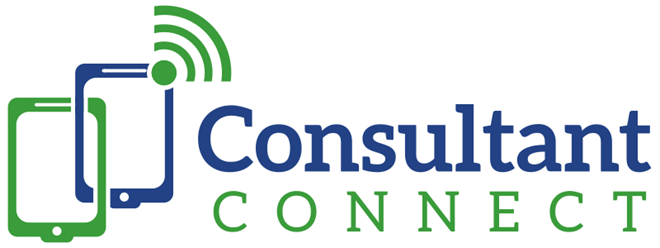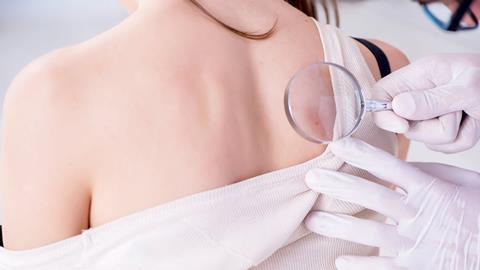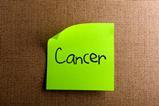Underpinned by a cross sector collaboration, a teledermatology service for patients with suspicious skin lesions is already showing demonstrable benefits for the wider system, writes Claire Read
Cross-sector collaboration to improve cancer care is not a new idea in Leeds, but a fresh initiative is aiming to make the approach even more effective. Launched last year, the Leeds Cancer Programme is a partnership between the local authority, NHS and Macmillan Cancer Support. There is optimism this new mechanism will strengthen and deepen connections between colleagues – and ultimately improve outcomes.
In the past six months, for instance, the Programme has been the means of introducing a new pathway for suspected skin cancer cases. The teledermatology scheme enables GPs to receive speedier expert input without the need for patients to attend unnecessary clinic appointments.
GPs use specialist equipment to take photos of the concerning lesion, which are then securely transmitted to a dermatologist via specialist software. Within 48 hours, the hospital consultant will have reported back – either reassuring that the lesion is benign and so no secondary care appointment needed, or inviting the patient in for a face to face consultation.
The new pathway is said to already be freeing up capacity and improving patient care, and the collaborative spirit in which it was born continues – early work has begun to spread the approach across the rest of the West Yorkshire and Harrogate region.
As a project lead for the Leeds Cancer Programme, Helen Ryan is part of an initiative bringing together the local authority, NHS and third sector partners to improve cancer care across the city. And she feels the neutrality she and her colleagues possess is a crucial factor in building the strong collaborative partnership the programme envisages.
“Although I was originally from Leeds Teaching Hospitals, I’m now not a provider, and I’m not a commissioner either – I’m employed by Macmillan as part of the Leeds Cancer Programme,” she explains. “So I’m that neutral link.”
In association with

Founded last year, the programme brings together Leeds City Council, Leeds Teaching Hospitals Trust, Leeds Clinical Commissioning Group and the third sector.
Work centres on four distinct areas – prevention, screening and awareness; early diagnosis; living with and beyond cancer; and delivering high-quality modern services. It is grounded in the belief that bringing different organisations together will support improvements in the quality of cancer care offered in the city.
Ms Ryan, who leads on the early diagnosis stream of the programme, says that belief is not actually a new one. “Previously there has been the Leeds Integrated Cancer Services Group, built around key providers and the council. But with extensive funding from Macmillan we had the opportunity to do something a bit bigger, and that’s where the Leeds Cancer Programme came from.”
While the roots of collaboration may have been there, she says the setup is increasing conversations and communication. “GPs across Leeds and consultants within Leeds Teaching Hospitals working together closer I think is quite new. As a core project element, it’s always been there. But the Leeds Cancer Programme projects are helping to develop and embed that.”
New pathway
Case in point: a new pathway for patients with suspicious skin lesions. A teledermatology service has now been in place for six months across all GP practices in Leeds. GPs have been equipped with dermatoscopes – specialist magnifying devices by which they can take images of the lesions using a mobile device.
Photos are taken using the PhotoSAF clinical photography feature in the Consultant Connect App, which saves the images and any notes to a secure cloud. The photos are then securely submitted straight to a consultant dermatologist who is able to review within 48 hours and offer expert assessment.
In other words, it’s a new method of supporting communication between primary and secondary care. And according to Wal Hussain, consultant dermatologist at The Leeds Teaching Hospitals Trust, it’s meeting a very real need while improving capacity.
“In Leeds, we very quickly realised that when the patient actually comes to hospital we’re able to reassure the patient just by looking at their mole that it’s benign”
“There’s a national shortage of dermatologists and so all departments are receiving an increasing number of potential skin cancer referrals from primary to secondary care,” he explains. “In Leeds, we very quickly realised that when the patient actually comes to hospital we’re able to reassure the patient just by looking at their mole that it’s benign.”
A pilot study organised by Dr Hussain suggested that such reassurance could equally be provided by a photographic referral, negating the need for clinic appointments.
It’s a contention which has been borne out by the implementation of the teledermatology setup. “Patients like it because the information can be processed very quickly, and also they’re hopefully going to get an answer quicker,” explains Rob Eastham, a practising GP and clinical lead for planned care (digital) at Leeds CCG.
Benefits
And there are demonstrable benefits for the wider system. “So far, 518 patients that otherwise would have received a two week wait clinic appointment have been told they don’t need to come in,” reports Steve Laville, senior commissioning manager at Leeds CCG.
“So that’s about 104 hours of appointments, of time that’s been freed up – time that can be used to see patients who do need to be seen in person.”
Adds Camelia Khoshehchin, business manager for dermatology at Leeds Teaching Hospitals: “Skin receives the highest number of two week referrals apart from lung and breast in our trust. And since we’ve gone live with the teledermatology pathway, we haven’t been breaching other than through patient choice.
“The point of triage [when the consultant reviews the photo referral] counts as the patient’s first two week wait appointment. So every single patient coming to us with photo attachments is compliant with 14 day – at day two.”
So far, 518 patients that otherwise would have received a two week wait clinic appointment have been told they don’t need to come in
The project was made possible through national cancer transformation funding provided via the West Yorkshire and Harrogate Cancer Alliance, and there has been early work on embedding something similar in the other localities covered by the Alliance.
“What has been fantastic from the Leeds team is their openness and their willingness to share the lessons that they’ve learnt through this programme,” argues Fiona Stephenson, Macmillan head of quality and optimal pathways at the Alliance.
“Because this is not an easy thing to do – it takes multiple people to come together; it’s about changing practice, it’s about winning hearts and minds, and it’s about turning an idea that someone has into a service that’s going to deliver improvements for patients.”
Harnessing teledermatology to improve cancer care in Leeds
- 1
 Currently reading
Currently readingHarnessing teledermatology to improve cancer care in Leeds
- 2
- 3
































